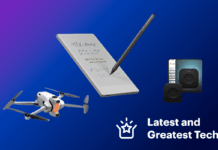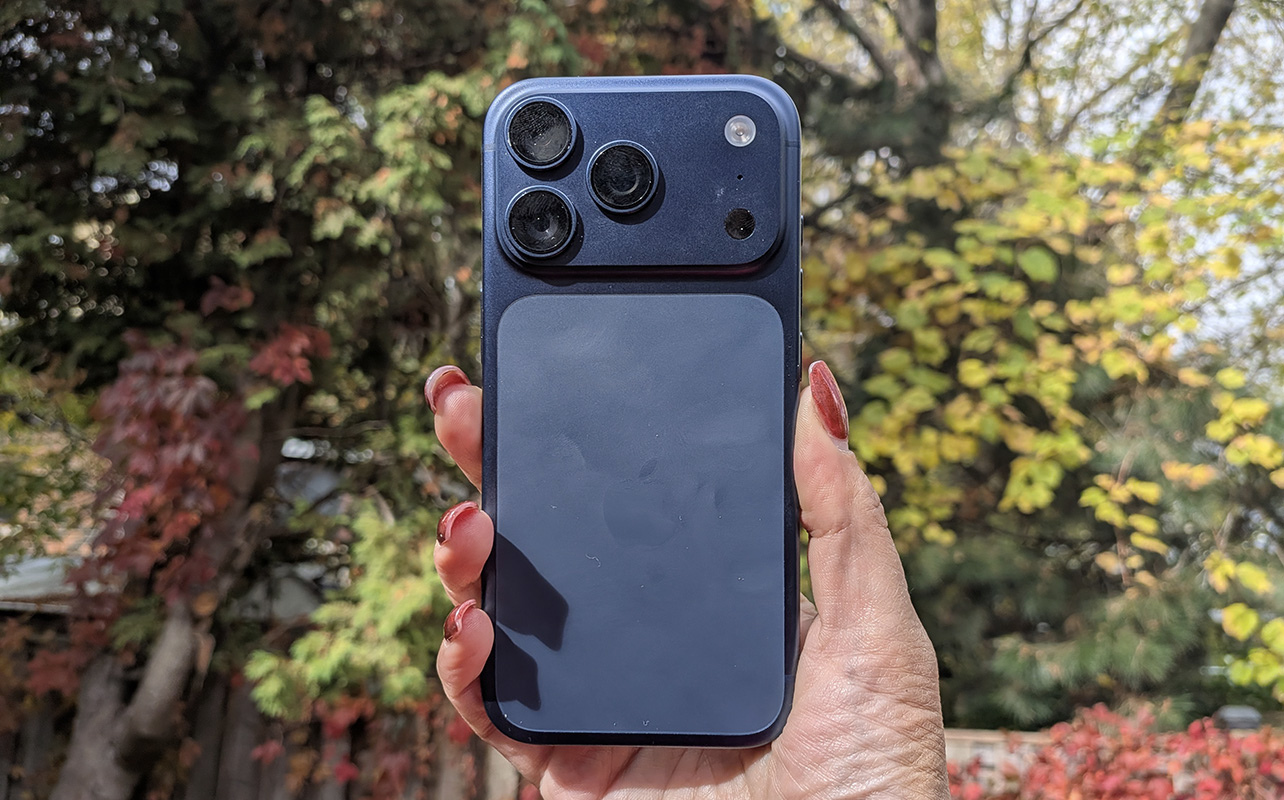
Apple has revealed its latest iPhone 17 series, and one of the most enticing models in the line is the iPhone 17 Pro. I like to call the Pro the Goldilocks model in every series because it’s not too big, not too small, but just right. It boasts all the premium features in a compact package, making it the ideal option for most users. Why is it a good choice for Apple users and how is it different from other models in the series? As a long time iPhone user, I have been testing the iPhone 17 Pro for a few weeks and have a good feel for what makes it stand out. Let’s take a look.
Watch my iPhone 17 Pro review
The sleek design
First, let’s dive into the basics and how this phone compares to others in the series.
Design and materials: ultra-durable
The Apple iPhone 17 Pro feels durable thanks to the Ceramic Shield 2 cover on not only the front but also the back. This carries over to other models in the series, too, with the exception of the entry iPhone 17. The brushed aluminum unibody design offers improved thermal performance, which multitaskers, content creators, and gamers especially will love. It’s available in Cosmic Orange (a chic option), Deep Blue, and Silver, and meets at IP68 rating for dust and water resistance. It comes in 256GB, 512GB, and 1TB capacities. Since there’s no expandable memory card slot, I’d recommend going with at least the 512GB variant. Otherwise, you’ll need an Apple iCloud storage plan to keep a back-up (do this for peace-of-mind anyway). Or offload old files to a hard drive when the phone gets full.
A stunning screen
It has a 6.3-inch Super Retina XDR OLED screen. That’s the same size as the iPhone 17, slightly smaller than the iPhone Air, and much smaller than the iPhone Pro Max. While the phone is roughly the same size as my older iPhone 15 Pro, but you get more screen real estate. ProMotion with an adaptive refresh rate up to 120Hz is core to every model in the line, as is up to 3,000 nits peak brightness so you can comfortably view the screen in bright sunlight.
iPhone 17 Pro specs table
Here’s a rundown of the basic specs of the device.
| Colours | Cosmic Orange, Deep Blue, Silver |
| Screen Size | 6.3 inches |
| Screen Type | Super Retina XDR OLED |
| Screen Resolution | 2,622 x 1,206 |
| Max Brightness | 3,000 nits |
| Pro Motion | Yes (120Hz adaptive refresh rate) |
| Materials | Aluminum unibody, Ceramic Shield 2 front and back |
| Water and Dust Resistance | IP68 |
| Chip and Processor | A19 Pro (6-core CPU, 6-core GPU) |
| Battery Life | Up to 33 hours video playback |
| Wireless Charging Speed | 25W (with 30W adapter) |
| Cameras | 48MP main, 48MP ultra-wide, 48MP telephoto, 18MP Center Stage |
| Optical Zoom Range | 8x |
| Storage Options | 256GB, 512GB, 1TB |
| USB-C Port | USB-C (supports USB 3) |
| Dimensions | 5.91 x 2.83 x .034 inches |
| Weights | 206 grams |
Apple Intelligence AI features are impressive
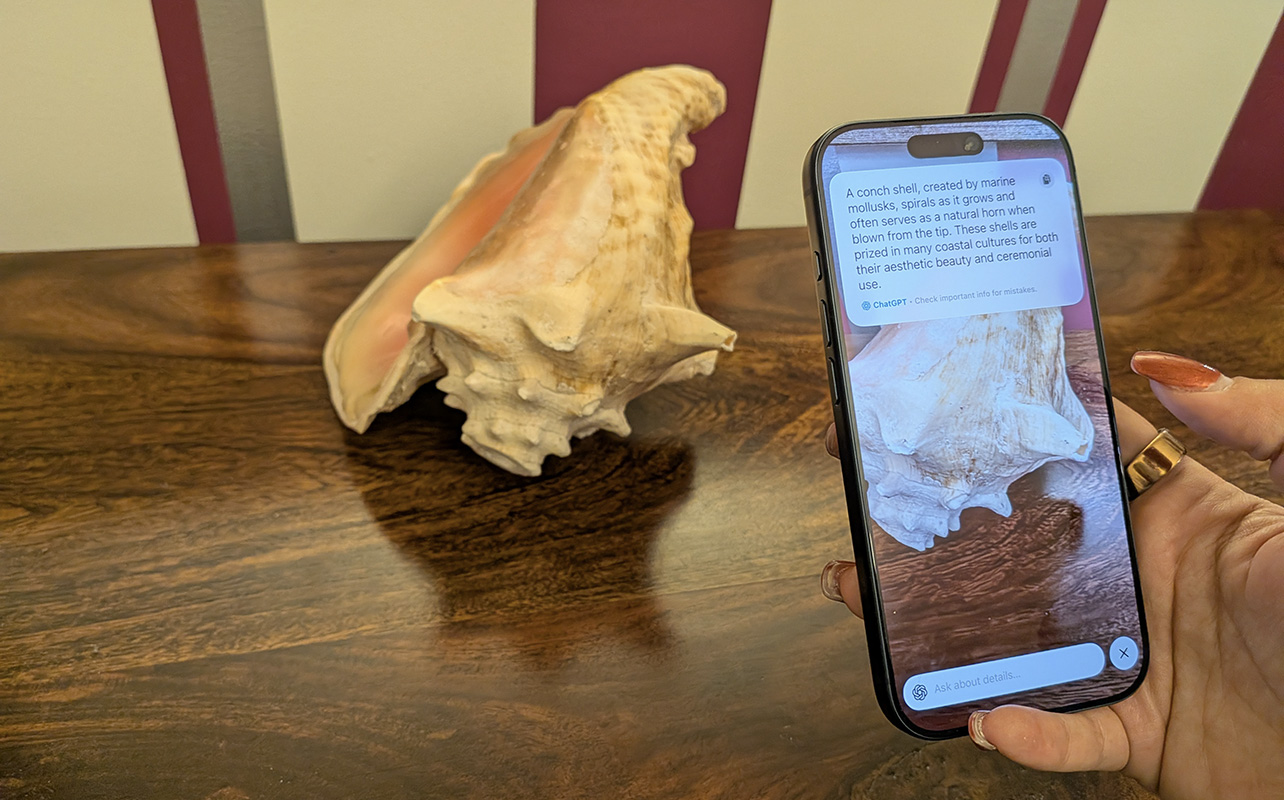
Apple Intelligence is at the heart of this phone, as it has been since the iPhone 15 Pro. This includes assistance with all sorts of tasks, from composing a message or e-mail to organizing your inbox, creating AI images, photo editing, and more.
A Visual Intelligence button on the side can be pushed at any time to get help about something, like learning more about an item in front of you, like a plant or animal. Snap a photo of an article or flyer to get a summary. It works well, with much of the intelligence leveraging ChatGPT. It’s not quite as good as Gemini Live yet in my opinion, but it’s getting there.
Some of my favourite Apple Intelligence features are ones I have been using since the iPhone 15 Pro. Clean Up for photos allows you to remove distracting elements, the phone intelligently filling in the blanks. Natural Language Search in Photos makes it easy to find an image using just a keyword. Type in Toronto Blue Jays, for example, and it pulls up relevant images from when we were at Jays game, or that contain Jays paraphernalia.
With Writing Tools, get helping with composing an e-mail, like a party invitation. Adjust the tone, even ask to make it sound more professional, playful, or exciting.
Photos and video kicked up a notch
The built-in cameras are a big improvement for this model. It has a Pro Fusion camera system that consists of three 48MP cameras, the first time ever for iPhone. This doesn’t rival other brands that have cameras with much larger main sensors, like the Samsung Galaxy S25 Ultra that has a 200MP main camera. But you get great shots whether it’s a standard photo, ultra-wide, or even telephoto.
Speaking of which, optical zoom is again nothing to write home about in comparison to rival Android phones. But the 8x optical zoom is the best yet for an iPhone. I took some photos at a concert while sitting far from the stage and the results were impressive. While the image wasn’t crystal clear, the fact that I could get so close to the action is unheard of for iPhone, until now. Macro photography also yields fabulous detail and sharpness in photos. You can also take stunning portraits.
There are a few camera-related features that are unique to this phone series, available in all four models.
Center Stage camera automatically gets everyone in the photo
With the 18MP Center Stage camera, there’s an auto-rotate and zoom function. Turn it on, hold the phone out to take a selfie, and capture more people in the frame without having to physically rotate your phone. I’ve tried it numerous times and it works wonderfully.
Dual Capture mode is great for reaction videos
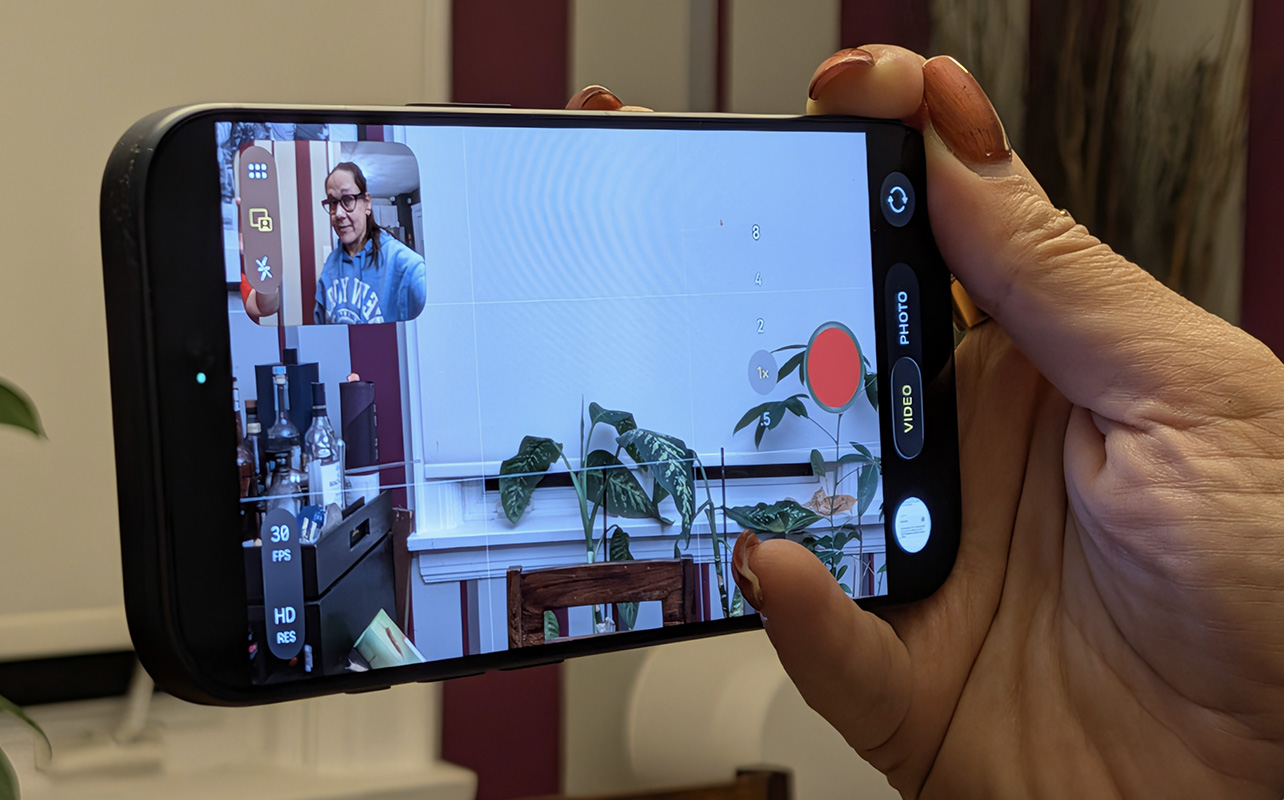
Something content creators will appreciate is Dual Capture mode. When recording a video, you can also capture your point-of-view in a small window in the corner of the footage. This could be your reactions while playing a video game or a parent commentating on a child’s sporting event. There are so many opportunities with this feature with which you can experiment.
Speaking of content creators, there are pro features for budding filmmakers, like ProRes RAW, Apple Log 2, and genlock. That makes this phone suitable for those who are interested in making and sharing various types of content.
iOS 26 upgrades out of the box
There are tons of goodies that come with iOS 26, which is compatible with iPhone models dating back to the iPhone 11. Along with Visual Intelligence, there’s also the new Liquid Glass design that provides a more fluid look with app icons and widgets.
Apple Intelligence includes features like Live Translations, Image Playground for creating images from your photos, Call Screening (a helpful feature if you tend to get a lot of spam calls that disrupt your day) and message screening from unknown senders. The messages are placed in a dedicated folder so you can review and delete them when you have time.
Hold Assist is also useful. I used this feature when calling the city to inquire about a broken water main. There were 27 callers ahead of me, but I simply left the phone at my side on speaker, and it silenced the call until an agent came on.
Battery life is decent
Get up to 33 hours of continuous video playback, 30 hours if streaming video. As with the 17 and 17 Pro Max, you can fast charge it for 20 minutes to get the battery to half full. But you’ll need an optional 40W or higher adapter to achieve these speeds. It also supports MagSafe and Qi2 wireless charging. If you use a 30W or higher adapter with a MagSafe charger, it’ll take about a half hour to get to 50% battery capacity.
A feature called Adaptive Power, part of iOS 26, will purportedly analyze usage patterns and adjust settings to maximize battery life. This happens in the background, so you likely won’t notice it. Overall, based on my heavy usage, you should expect to charge the phone daily, ideally overnight.
Overall performance
All in all, the iPhone 17 Pro is a solid smartphone that delivers plenty of intelligence, snappy performance, and tons of cool photo and video capture features. It’s the best iPhone model right now for Apple ecosystem fans. It works seamlessly with other Apple devices including Apple Watch, Mac, and the new Apple AirPods Pro 3.
Comparison to other iPhone 17 models
Check out my comparison article of all four iPhones for a deeper dive into how the iPhone 17 Pro compares. But here’s a quick breakdown.
It’s similar in look and feel to the iPhone 17 but with a more powerful chip, Ceramic Shield 2 on the front and back, longer battery life, the addition of the 48MP telephoto camera, longer optical zoom range, a 1TB storage option, and support for USB 3 for faster data transfers. Compared to the iPhone 17 Pro Max, that model has a larger, higher-resolution screen and longer battery life. It’s, of course, also physically larger and heavier.
When it comes to the iPhone Air, it’s slimmer, more lightweight, and ultra-durable with a titanium frame. It has a slighter larger screen than the iPhone 17 Pro. Its screen is higher-res but it’s chip is not as powerful, with a 5-core GPU versus 6-core. Battery life is less and charging speed slower on the iPhone Air. That phone also only has a single 48MP main camera alongside the 18MP Center Stage camera. Optical zoom range is just 2x.
Who should get the iPhone 17 Pro?
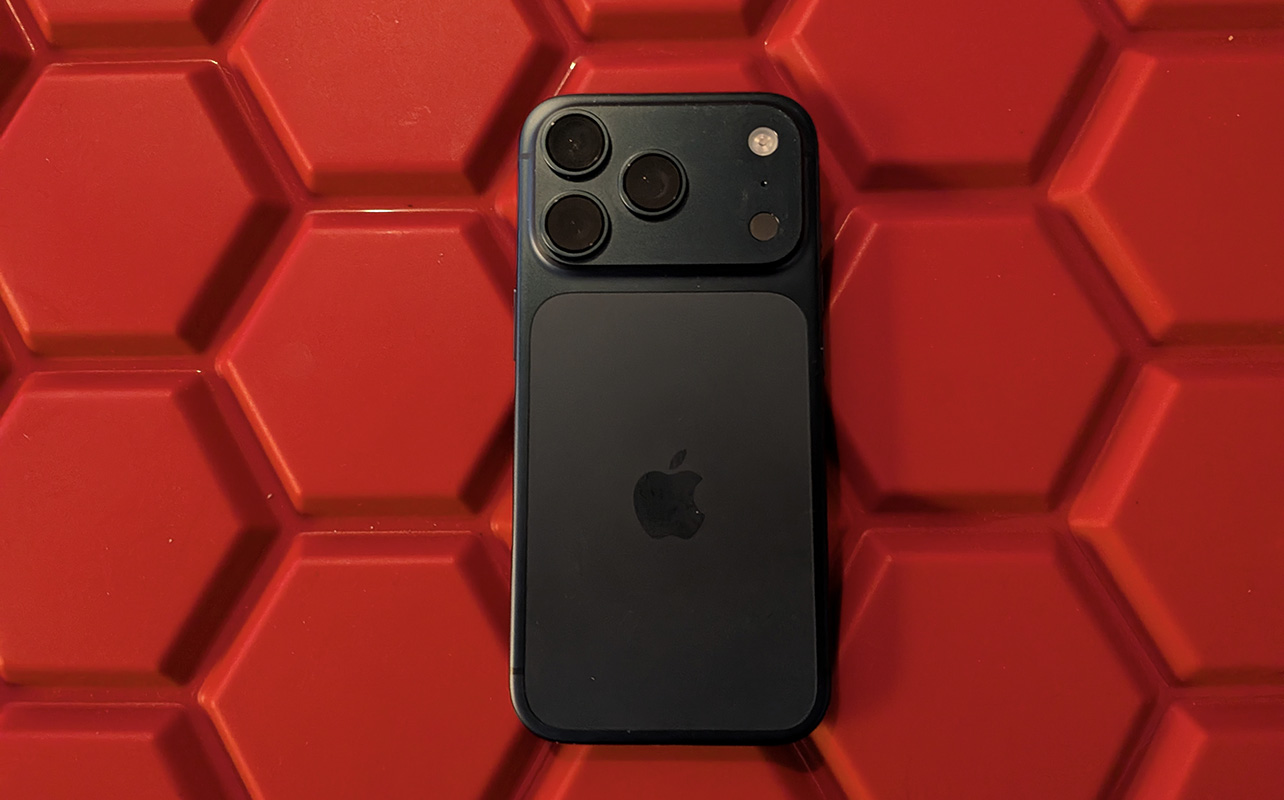
The iPhone 17 Pro is the best option for most iPhone users looking to upgrade. It offers a good balance between performance and value. With that said, if you want to save a few bucks, go with the iPhone 17, ideal for entry users. If you can find one for a steal, I’d recommend stepping down to the iPhone 16 Pro instead. This way, you still get the Pro specs along with all the same iOS 26 goodies.
If you can wait, especially since iPhone 17 series models are reportedly seeing high demand and production delays, take the time to save and go with the iPhone 17 Pro. It affords the best bang for your buck.
Check out the iPhone 17 Pro at Best Buy Canada.




